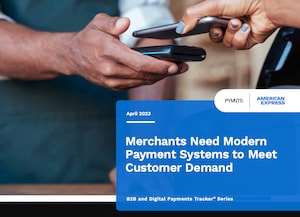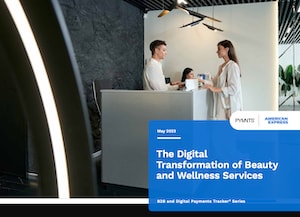November 14, 2023
The Future of Retail

In the fast-paced world of retail, staying on top of trends isn't merely beneficial: It's essential. You're not just competing with other retailers in your area, you're competing with a global market that's just a click away for potential customers.
Keeping up with these trends means embracing emerging technologies like AI and automation. These latest tech advances are revolutionizing not only how products are sold but also how today's customers shop.
Who's behind the wheel driving these tech trends in retail? It's the younger generations—Gen Z and Millennials specifically. As digital natives, they're leading the shift towards a tech-enhanced shopping experience, from the use of AI for personalized recommendations to automation for faster and more convenient transactions —for example, self-checkout kiosks and automated payment systems that let shoppers breeze through the checkout process.
Understanding the influence of younger customers is just the first step. Let's explore four tech-driven trends shaping the retail industry today:
1. Hyper-personalization
Generic approaches are a thing of the past, thanks to the rise of hyper-personalization. Powered by a combination of AI advancements and the vast amounts of data now available to retailers, businesses can now fine-tune their messaging and support to align with each customer's specific needs and preferences, creating highly personalized interactions at each touchpoint. Consumers today expect individualized attention in their brand encounters. Whether it's targeted product ads that pop up in a user's social media feed or a chatbot that remembers previous interactions, these expectations are a clear signal: For retailers, hyper-personalization isn't just a nice-to-have—it's a must.
The shift towards hyper-personalization isn't just beneficial for consumers. It's a game-changer for retailers too. Using AI-driven analytics, you can understand not only what your customers want, but also how they interact with your brand, giving you the insight you need to make on-the-spot offers, create targeted marketing campaigns, or provide real-time chat support.
2. Social and mobile commerce
Social and mobile commerce are emerging as significant digital trends that are fundamentally changing the way your customers shop. By leveraging AI tools like ChatGPT, retailers can use these channels to offer highly interactive and personalized features that make shopping more convenient and enjoyable.
Investing in this trend has become a necessity. Platforms like TikTok and Instagram have become new storefronts, offering you additional opportunities to drive revenue. By integrating chatbots and AI algorithms into social media channels and mobile apps, you could offer real-time 24/7 customer support, product recommendations, or even complete customer transactions.
3. Experiential retail
The retail experience isn't solely about transactions anymore: It's about creating memorable experiences for customers. Technologies such as virtual reality (VR) and augmented reality (AR) are playing a pivotal role in this transformation, evolving traditional store layouts and digital storefronts into more interactive spaces. Today's shoppers aren't just buying, they're experiencing, thanks to this blend of VR and AR.
4. Phygital retail
Phygital retail — the blending of physical and digital storefronts — isn't just a buzzword these days. The future of retail lies in implementing a seamless phygital strategy. Innovative brands are already taking note and leaning into this trend by designing physical stores that reflect the convenience of online shopping.
As a retailer, robust apps and in-store technology give you the ability to go phygital and provide a cohesive connection between your online and physical storefronts. The result? In addition to expanding your reach to a global customer base, your customers get the immersive, interactive experiences they're looking for—making phygital retail an avenue you can't afford to ignore.
The bottom line? Retail isn't what it used to be. And that's a good thing. Technology is adding value for both customers and retailers, creating experiences that are personalized, interactive, and even fun. If you're not already on board with these trends, now is the perfect time to jump in—adopting these technologies has become easier and more affordable, making it accessible for retailers of all sizes.
This content was written by a freelance author and commissioned and paid for by American Express. This article contains general information and is not intended to provide information that is specific to American Express products and services.








